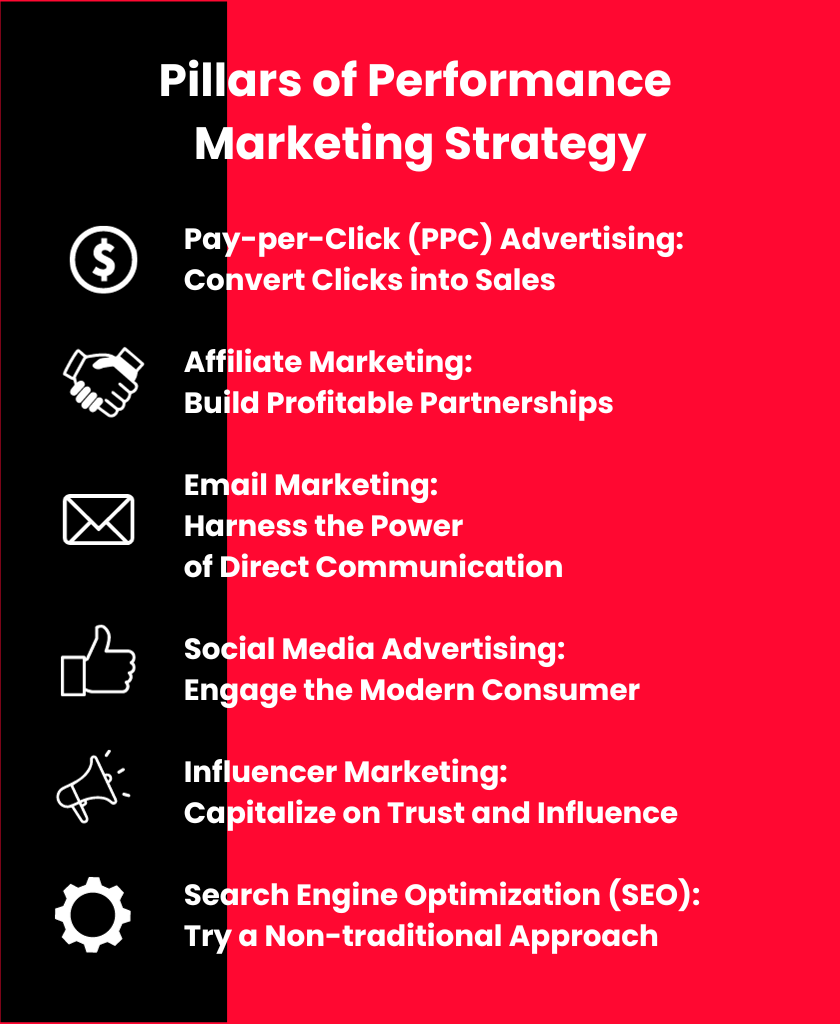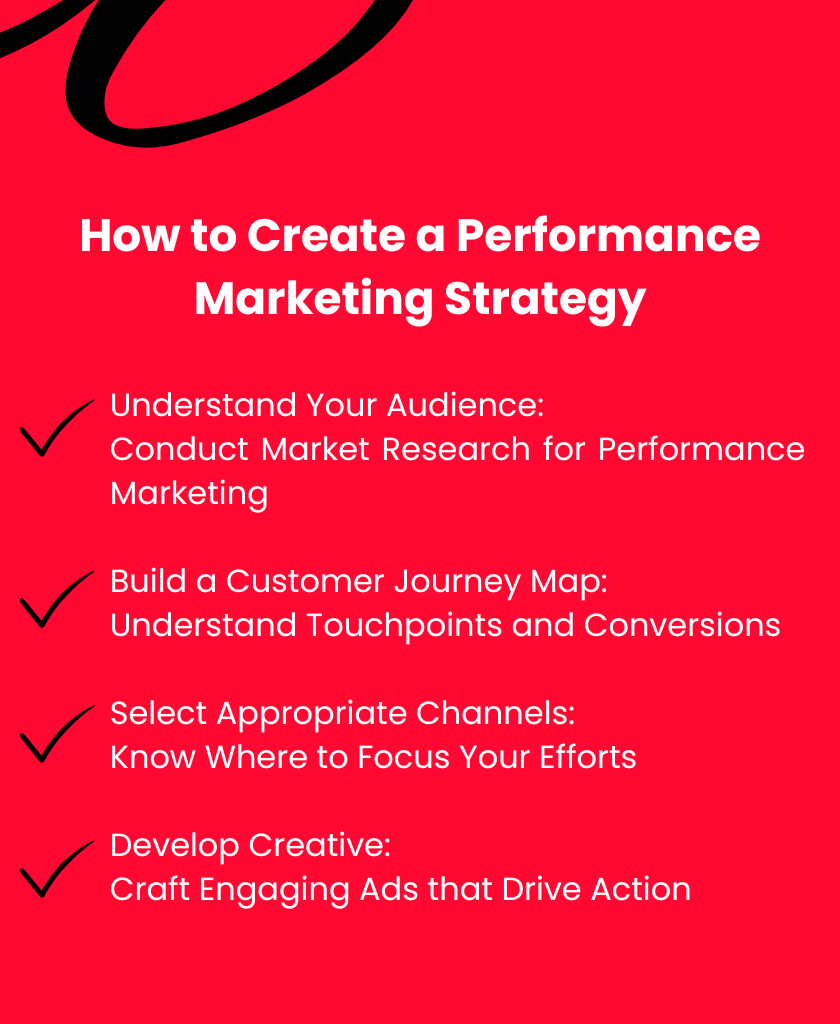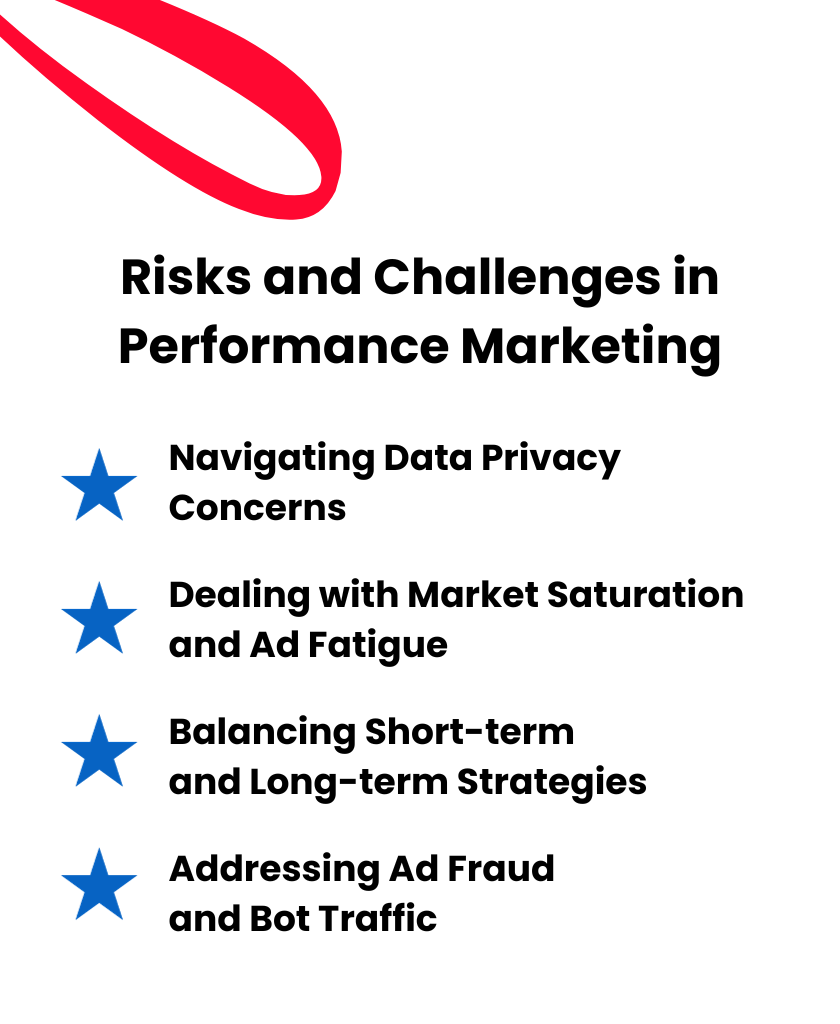Navigating the world of B2B marketing, especially when you steer into the depths of performance marketing, can be a nuanced task.
If you’re a marketing manager or a CMO eager to understand and refine your performance marketing campaign, welcome aboard!
As sales cycles extend and decision-making demands more attention, identifying effective strategies becomes non-negotiable.
We’re about to journey through insights and tried-and-true methods that yield results, putting the specific challenges of B2B marketing in the spotlight.
Let’s kick things off by making the complex world of performance marketing a lot simpler and outlining a definitive path forward.
[SPOILER ALERT] We have a bonus for you – a free Strategic Performance KPIs template!
What is Performance Marketing
Performance marketing zeroes in on paying for tangible results – the genuine actions of potential customers. This model sharply contrasts with traditional brand marketing, where you’re charged for ad visibility rather than its actual success.
Why Performance Marketing is Essential for Your Business
In the digital marketing era, performance marketing plays a pivotal role due to its relatively straightforward (though not always) measurement techniques.
This model allows us to account for various acquisition channels and a range of objectives, from brand-building and education to product-focused and sales-driven. It’s hard to imagine robust marketing efforts today without incorporating performance marketing.
Getting to the Heart of the Matter: Core Concepts
Before diving deeper into performance marketing strategies, let’s unpack a few essential terms. Understanding these will help B2B marketing managers navigate their campaigns more smoothly.
Unpacking Essential Jargon
Below, we’ve distilled some fundamental terms to help you confidently converse and make informed decisions.
- CPA (Cost Per Acquisition): Think of this as the price tag attached to each meaningful action or conversion, like a sale or a click.
- CPC (Cost Per Click): Simply put, it’s what you spend each time someone clicks on your ad, regardless of what they do next.
- CPL (Cost Per Lead): The cost of attracting a potential customer, usually someone showing interest but not yet committed to buying.
- CAC (Customer Acquisition Cost): The combined expenses, from marketing to operations, divided by the total new customers you’ve welcomed on board.
- CPO (Cost Per Order): A reflection of the average expense tied to each order, considering all the promotional nudges leading to a purchase.
- CPS (Cost Per Sale): It’s akin to CPO but zooms in on the specific cost of clinching an actual sale. These encompassing activities might come after that initial click or other influencing factors.
The Role of Data in Performance Marketing
Data sits at the heart of performance marketing. Without data, there’s no performance marketing. We need to measure every goal we set in performance marketing.
But, diving into this, we often face challenges. These include common measurement hurdles like errors, ensuring accuracy, choosing the right technology, and picking computational methods.
We might also see unexpected shifts and fluctuations in data. Visualizing data is one thing, but truly understanding and interpreting it is critical.
Pillars of Performance Marketing Strategy
Navigating the world of performance marketing can feel like a maze. But don’t worry! You can simplify it by focusing on its key pillars. Each pillar has its own set of rules, benefits, and challenges. Let’s break them down one by one.
Pay-per-Click (PPC) Advertising: Converting Clicks into Sales
PPC advertising is your bread and butter in performance marketing. More platforms are popping up all the time, giving you more places to get your message out there. But remember, a click is great, but a sale is even better. So, focus on selecting the right keywords and crafting landing pages that convert.
Affiliate Marketing: Building Profitable Partnerships
Affiliate marketing adds a human touch to your strategy. Here, you partner with other businesses to tap into their audiences—and they tap into yours. Both sides win. To make the most of it, you need a solid plan to measure how much value these partnerships bring.
Email Marketing: Harnessing the Power of Direct Communication
Email marketing is a bit of an outsider in the performance marketing world. Traditionally, we think about it as a cost per email sent. But in today’s digital age, you can measure performance in new ways, like the cost per email opened. So, it’s becoming more aligned with performance marketing principles.
Social Media Advertising: Engaging the Modern Consumer
Social media advertising is the new kid on the block. While you might still see traditional cost-per-thousand (CPM) metrics, don’t let that fool you. Social media platforms allow you to connect with people in unique ways. Sometimes, a casual tone or entertaining content can do wonders for driving sales.
Influencer Marketing: Capitalizing on Trust and Influence
Influencer marketing is even newer to the scene. Platforms like TikTok lead the charge but don’t overlook others like Instagram or Pinterest. Trust plays a significant role here, so you’ll want to pick influencers who resonate with your brand and target audience.
Search Engine Optimization (SEO): A Non-traditional Approach
Search engine optimization is a bit of an oddball in performance marketing. It used to be all about your position on the search page. But now, we can focus on key metrics like the cost of driving traffic to your site. That makes SEO more relevant than ever in a performance marketing strategy.

Crafting an Effective Performance Marketing Strategy
To make the most of your performance marketing efforts, a robust strategy is essential. This ensures that every move is purposeful, targeted, and geared towards generating the best results.
Let’s dive into the steps you should consider when crafting your strategy:
Understanding Your Audience: Market Research for Performance Marketing
The foundation of any good digital marketing strategy lies in understanding your audience. And performance marketing is no exception. With precise market research, you can gain insights into your audience’s preferences, behaviors, and needs. This can significantly streamline your ad targeting, making your campaigns more effective and reducing desired actions’ costs.
Building a Customer Journey Map: Understanding Touchpoints and Conversions
Every customer goes through a journey – from first hearing about your brand to purchasing and beyond. By mapping out this journey, you can identify critical touchpoints where your customers interact with your brand.
Recognizing these touchpoints and understanding the potential for conversions at each stage will allow you to tailor your marketing efforts more precisely, ensuring that your messaging resonates and prompts action.
Selecting Appropriate Channels: Where to Focus Your Efforts
Choosing the proper channels for your campaigns is crucial. Over time, the number of performance marketing channels has proliferated.
Whether it’s:
- Email marketing
- Affiliate platforms
- Google Ads
- Meta Ads
- YouTube
- TikTok
- Clutch
- Capterra
- Programmatic platforms
- Amazon ads
- Price comparison websites
- Marketplaces
- Review platforms
- Content platforms
- or even SEO-approached with a performance marketing mindset.
Deciding where to direct your efforts means assessing which platforms align best with your target audience and business goals. It’s not about being everywhere; it’s about being where it matters most.
Developing Creative: Crafting Engaging Ads that Drive Action
To captivate your audience and inspire them to take action, you should pay attention to the creative aspect of your campaigns.
Develop a varied blend of creative content to cater to all personas at every stage of the buying process.
Whether it’s engaging content that sparks interest, educational material that offers value, entertaining snippets that delight, sales-driven pitches, or instructional guides – you should integrate every type into your performance marketing strategy.
Remember, a well-crafted message can make all the difference in turning a viewer into a customer.

Implementation & Execution
After you’ve laid the foundation of your performance marketing strategy, the next step involves bringing it to life. In this phase, you set things in motion, gather data, iterate, and scale.
Here’s how you can effectively navigate through implementation and execution:
Tracking and Analytics: Measuring Your Performance
Selecting a suitable payment model is only half the battle. You must face the truth head-on: Can you measure performance precisely and reliably? Relying solely on data provided by platforms or vendors can be risky.
Having the skills and tools to verify the accuracy of the data you receive from advertising platforms is essential.
Only with a clear understanding of your metrics can you determine the effectiveness of your campaigns and make data-driven decisions.
| BONUS – FREE Strategic Performance KPIs template Here’s a sample template to measure key performance indicators (KPIs). You can download this file and tailor it to your needs. Just remember, it comes with randomly filled data. You should measure the indicators in the matrix regularly, ideally every month. This practice will help you track trends over time. We recommend using this KPI matrix to create analytical dashboards. Charts on these dashboards will clearly show the trends and make your analysis more insightful. When you’re analyzing, focus mainly on the trends. Check whether the indicators improve or decline over time. You can also compare how different channels perform in various markets or look at direct traffic, which might give insights into a particular channel’s influence on overall acquisition or how one channel impacts another. However, try to avoid comparing channels against each other directly. Each channel has its unique role, objective, and characteristics. It’s like comparing a forward to a defender in soccer based on their goal count. CLICK HERE Enjoy! |
A/B Testing: Fine-Tuning Your Strategy
Performance marketing is an ongoing journey of tests and experiments. The real art lies in asking the right questions and ensuring statistical significance.
Large enterprises like Google or Amazon might indulge in minute tests, such as tweaking link colors because their massive user base means that even a fraction of a percentage change can lead to significant revenue growth.
However, for individual cases, it’s crucial to calculate the statistical significance. You can utilize readily available tools like the one provided by SurveyMonkey to make this process more straightforward.
Scaling Your Strategy: From Local to Global
Many elements transform as you aim to expand your performance marketing campaigns from a local to a global scale.
While the structure of channels will vary, you’ll also need to tackle issues inherent to classical marketing. This includes adapting your tone of voice for different regions, navigating varied accounting priorities, understanding distinct payment and invoicing systems, abiding by various legal regulations, and grappling with diverse technological infrastructures.
As you scale, be prepared to constantly learn, adapt, and re-strategize to fit the unique needs of each market.
Risks and Challenges in Performance Marketing
Performance marketing, while potent, is not without its pitfalls. As marketers, understanding these challenges can help you navigate them more effectively and make informed decisions. Here’s a closer look at some of the most pressing issues faced in this domain:
Navigating Data Privacy Concerns
Data privacy is a prominent concern in today’s digital age. The phasing out of third-party cookies, the rise of ad-blockers, and regulations like GDPR have made data collection and tracking more challenging.
Ironically, while these measures aim to protect user privacy, they sometimes require collecting even more data to estimate the missing pieces accurately.
Marketers must be proactive, adapting to these changes and ensuring compliance while still gathering the insights needed to run effective campaigns.
Dealing with Market Saturation and Ad Fatigue
The digital marketplace is more saturated than ever. With increasing competition, marketers face rising costs-per-click (CPC) and costs-per-acquisition (CPA), making it harder to get a favorable return on investment.
Consumer attention is a finite resource, and the fight to capture it is fierce. That’s why selecting the proper channels and crafting messages that resonate deeply with your target audience is paramount.
Ensuring your relevant and valuable advertising can differentiate between a successful campaign and one lost in the noise.
Balancing Short-term and Long-term Strategies
It’s essential to strike a balance between short-term and long-term objectives. While metrics like CPC might be immediate campaign performance indicators, longer-term metrics like cost-per-sale (CPS) offer insights into sustained profitability.
While you might be tempted to tweak your audience or switch channels frequently, remember that core, strategic channels should remain consistent and operate continuously.
Experimentation is vital, but having a stable foundation from which to innovate is equally crucial.
Addressing Ad Fraud and Bot Traffic
Digital fraud is an unfortunate reality in the world of performance marketing. From bots generating fake clicks to fraudulent practices aimed at siphoning off advertising budgets, marketers must be vigilant.
It’s not just about wasted spend—poor quality traffic can skew data, leading to misguided decisions. Employing advanced tracking solutions, regularly auditing traffic sources, and collaborating with trusted partners are just a few ways to combat this persistent challenge.
In conclusion, while the dynamic landscape of performance marketing offers numerous opportunities, it’s rife with challenges that require nimble strategies and constant vigilance.
By understanding and anticipating these challenges, you can better equip yourself to navigate the evolving digital marketing terrain and achieve success.

Ready to revamp your performance marketing campaigns?
Performance marketing in the B2B sector poses its unique set of challenges. But with the right ally, it doesn’t have to be overwhelming.
The Cayenne Flow agency is primed to assist. We understand the nuances of both social media marketing and performance marketing, and we’re dedicated to fetching tangible results.
Ready for the next steps? Schedule a discovery call with us. Let’s discuss how we can collaboratively fuel your business growth.







